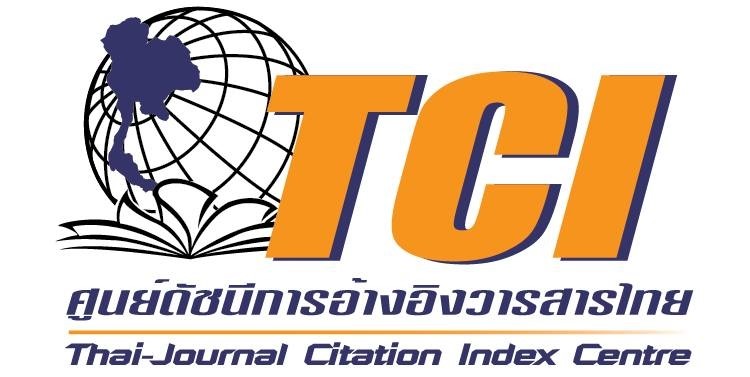ผลการสังเคราะห์กรอบแนวคิดการออกแบบสิ่งแวดล้อมทางการเรียนรู้ แบบจักรวาลนฤมิต ที่ส่งเสริมการคิดเชิงวิทยาศาสตร์ สำหรับห้องเรียนเคมี
คำสำคัญ:
สิ่งแวดล้อมทางการเรียนรู้แบบจักรวาลนฤมิต, การคิดเชิงวิทยาศาสตร์, การสังเคราะห์บทคัดย่อ
การศึกษาครั้งนี้มีวัตถุประสงค์เพื่อสังเคราะห์กรอบแนวคิดของสิ่งแวดล้อมทางการเรียนรู้แบบจักรวาลนฤมิตที่ส่งเสริมการคิดเชิงวิทยาศาสตร์ สำหรับห้องเรียนเคมี กลุ่มเป้าหมายที่ใช้ในการศึกษา ได้แก่ นักเรียนชั้นมัธยมศึกษาปีที่ 5 จำนวน 26 คน โรงเรียนประจักษ์ศิลปาคาร อำเภอเมือง จังหวัดอุดรธานี ในการสำรวจบริบทและผู้เชี่ยวชาญในการตรวจเอกสาร และกรอบแนวคิดการออกแบบสิ่งแวดล้อมทางการเรียนรู้แบบจักรวาลนฤมิตที่ส่งเสริมการคิดเชิงวิทยาศาสตร์ สำหรับห้องเรียนเคมี จำนวน 5 คน การวิจัยในครั้งนี้ใช้วิธีการศึกษาหลายรูปแบบ ได้แก่ การวิจัยเอกสาร และการวิจัยเชิงสำรวจที่ใช้การเก็บรวบรวมข้อมูลเชิงคุณภาพ การวิเคราะห์ข้อมูลโดยการสรุปตีความและการวิเคราะห์ ผลการวิจัยพบว่า การสังเคราะห์กรอบแนวคิดสิ่งแวดล้อมทางการเรียนรู้แบบจักรวาลนฤมิตที่ส่งเสริมการคิดเชิงวิทยาศาสตร์ สำหรับห้องเรียนเคมี ได้แก่กรอบแนวคิดเชิงทฤษฎี ประกอบด้วย 5 พื้นฐาน ได้แก่ 1) พื้นฐานด้านบริบท 2) พื้นฐานทางจิตวิทยาการเรียนรู้ 3) พื้นฐานด้านศาสตร์การสอน 4) พื้นฐานด้านเทคโนโลยี และ 5) พื้นฐานการคิดเชิงวิทยาศาสตร์ และกรอบแนวคิดในการออกแบบ ประกอบด้วย 4 พื้นฐาน คือ 1) กระตุ้นโครงสร้างทางปัญญา 2) การสนับสนุนการปรับโครงสร้างทางปัญญา 3) การส่งเสริมการขยายโครงสร้างทางปัญญา และ 4) การช่วยเหลือการปรับสมดุลทางปัญญา นอกจากนี้ผลจากการศึกษาพื้นฐานด้านบริบทที่ได้จากการสำรวจความคิดเห็นและการสัมภาษณ์ผู้เรียนพบว่า ผู้เรียนไม่เคยมีประสบการณ์เรียนรู้ตามแนวคอนสตรัคติวิสต์ และกิจกรรมที่ใช้เทคโนโลยีในการส่งเสริมการคิดเชิงวิทยาศาสตร์ การจัดการเรียนการสอนส่วนใหญ่เป็นการถ่ายทอดความรู้จากครู และจากการประเมินของผู้เชี่ยวชาญพบว่า มีความสอดคล้องระหว่างหลักการทฤษฎีกับกรอบแนวคิดเชิงทฤษฎี และกรอบแนวคิดการออกแบบ
References
โครงการ TIMSS 2015 THAILAND สถาบันส่งเสริมการสอนวิทยาศาสตร์และเทคโนโลยี. (2558). สรุปผลการวิจัยโครงการ TIMSS 2015. จังหวัดสมุทรปราการ: แอด วานซ์ พริ้นติ้ง เซอร์วิส จำกัด.
ฐิติมา กำลังเลิศ. (2554) การพัฒนาโมเดลการสร้างความรู้ที่ส่งเสริมการคิดเชิงวิทยาศาสตร์ สำหรับนักเรียน ชั้นประถมศึกษาปีที่ 6. วิทยานิพนธ์ปริญญาศึกษาศาสตรมหาบัณฑิต สาขาวิชาเทคโนโลยีารศึกษา มหาวิทยาลัยขอนแก่น.
ศูนย์ดำเนินงาน PISA แห่งชาติ สถาบันส่งเสริมการสอนวิทยาศาสตร์และเทคโนโลยี. (2564). ผลการประเมิน PISA 2018 การอ่าน คณิตศาสตร์ และวิทยาศาสตร์. สืบค้น 11 มกราคม 2566 จาก https://pisathailand.ipst.ac.th/pisa2018- summary-result/.
สถาบันส่งเสริมการสอนวิทยาศาสตร์และเทคโนโลยี. (2558). สรุปผลการวิจัยโครงการ TIMSS 2015. จังหวัดสมุทรปราการ: แอดวานซ์ พริ้นติ้ง เซอร์วิส จำกัด.
สุมาลี ชัยเจริญ. (2550). การพัฒนาโมเดลต้นแบบสิ่งแวดล้อมทางการเรียนรู้บนเครือข่ายที่ส่งเสริมการสร้างความรู้ตามแนวคอนสตรัคติวิสต์. รายงานการวิจัย. ขอนแก่น: คณะศึกษาศาสตร์ มหาวิทยาลัยขอนแก่น.
สุมาลี ชัยเจริญ และคณะ. (2554). เทคโนโลยีการศึกษาและการพัฒนาระบบการสอน. ขอนแก่น: คณะศึกษาศาสตร์ มหาวิทยาลัยขอนแก่น.
สิรภพ เทพพิทักษ์. (2565). ความฉลาดรู้ทางวิทยาศาสตร์: คุณลักษณะสำคัญในศตวรรษที่ 21. กรุงเทพฯ: มหาวิทยาลัยราชภัฏบ้านสมเด็จเจ้าพระยา.
เสาวคนธ์ สมาน. (2555). การพัฒนาโมเดลสิ่งแวดล้อมการเรียนรู้มัลติมีเดียวิชาเคมีที่ส่งเสริมการคิดเชิงวิทยาศาสตร์. วิทยานิพนธ์ปริญญาศึกษาศาสตรมหาบัณฑิต สาขาวิชาเทคโนโลยีการศึกษา มหาวิทยาลัยขอนแก่น.
Brown, J. S., Collins, A., & Duguid, P. (1989). Situated Cognition and the Culture of Learning. Educational Researcher, 18(1), 32–42.
Hannafin, M., Land, S. & Oliver, K. (1999). Open Learning Environments: Foundations, Methods, and Models. In CM. Reigeluth (Eds.). Instructional-design theories and models Volume II. A New Paradigm of Instructional Theory. (pp.115-140). Mahwah, New Jersey: Lawrence Erlbaum Associates.
Kuhn D. (2011). What is scientific thinking and how does It develop? In U. Goswami (Ed.), The Wiley-Blaclwell handbook of childhood cognitive development (2 nd ed., pp. 497-523). Wiley Blankwell.
Mayer, R. E., Bove, W., Bryman, A., Mars, R., & Tapangco, L. (1996). When Less Is More: Meaningful Learning from Visual and Verbal and verbal summaries of science textbook lessons. Journal of Educational Psychology, 88(1),64-73. https://doi.org/10.1037/0022-0663.88.1.64.
Piaget, J. (1965). Judgement and reasoning in the child. (M. Wardon, Trans). London: Routledge and Keganpaul.
Downloads
เผยแพร่แล้ว
How to Cite
ฉบับ
บท
License
Copyright (c) 2024 วารสารวิทยาการจัดการ มหาวิทยาลัยราชภัฏสกลนคร

This work is licensed under a Creative Commons Attribution-NonCommercial 4.0 International License.
บทความที่ตีพิมพ์ในวารสารวิทยาการจัดการ มหาวิทยาลัยราชภัฏสกลนคร เป็นทัศนะ ลิขสิทธิ์ และความรับผิดชอบของผู้เขียนเจ้าของผลงาน






